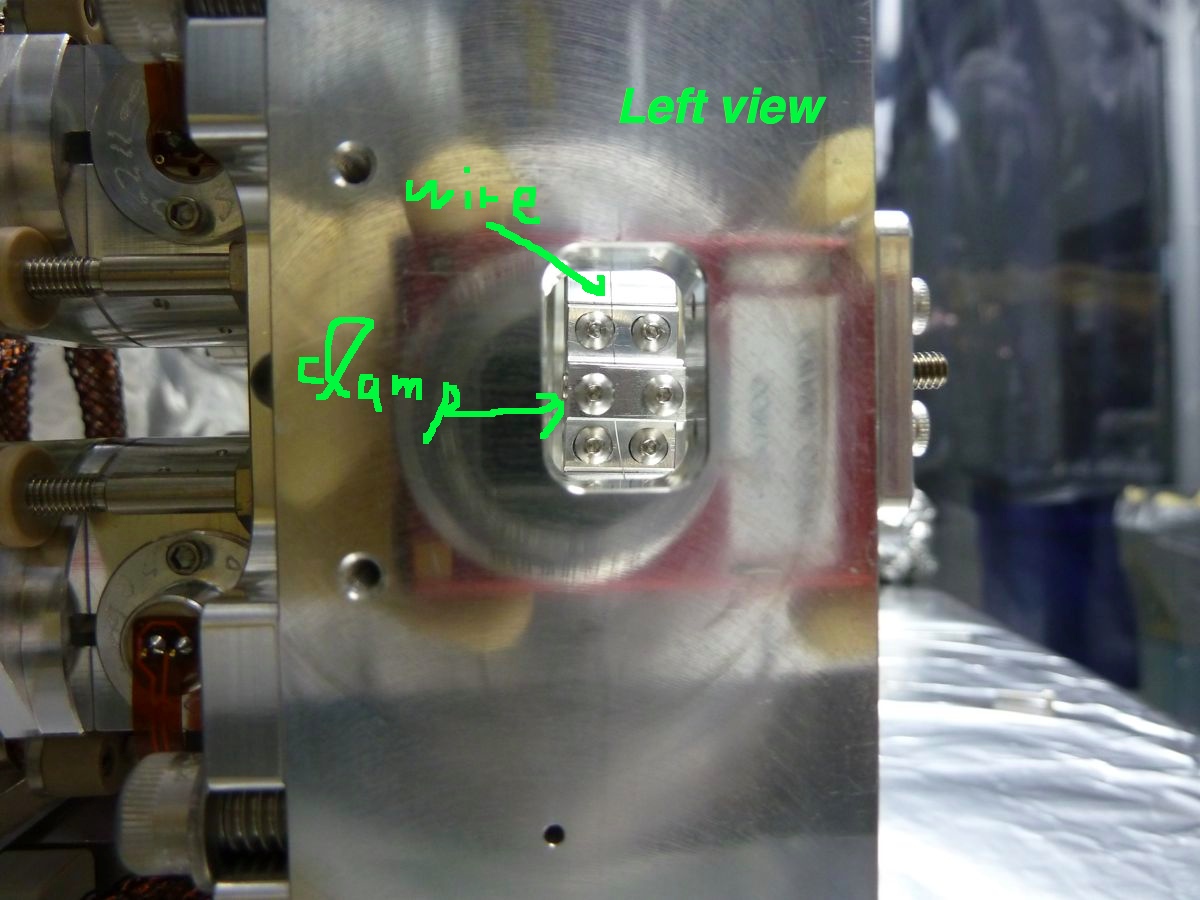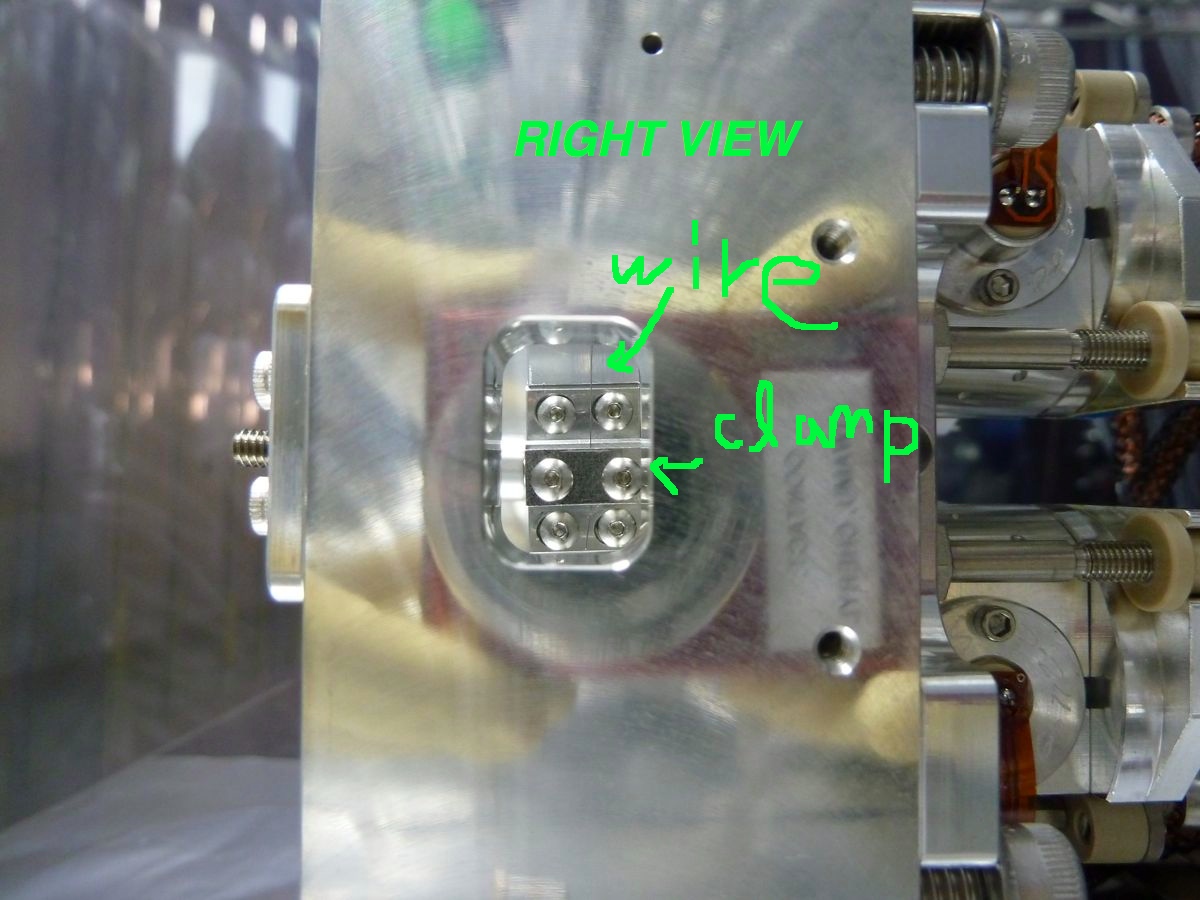- Joe, Paul, Cheryl
FI Isolation Measurement:
Two 2" beam splitters were installed in the main IO path, and the IMC was relocked. The beam splitters are at about 45 degrees w.r.t. the beam, and both reduce the power going into the IMC, requiring a change in threshold to lock the IMC. Locking was briefly delayed after a reboot to the LSC brought it back with outputs turned off, but after reenabling the LSC the IMC relocked right away. WFS were engaged, and the offsets WFS sent to each IMC optic were within +/-4 (units?) of the offsets during the IMC lock before we installed the two beam splitters, so input pointing was very closely restored.
The purpose of the two beam splitters is to catch the beam that makes it back through the FI and IMC, which gives us a measurement of the isolation ratio of the FI. The return beam should reflect off the back surface of the second beam splitter, but unfortunately, the return beam was either not present or overwhelmed by a direct reflection of the 2" lens downstream.
The rework of the IO path in March left that 2" lens (dowstream of the second beam splitter) at a very shallow angle to the IO beam, so basically 90 degrees to the beam. This means the reflection from that lens it makes back to the EOM is now actually clipping on the output aperture of the EOM. Before the rework the reflection was offset from the EOM output aperture by about 10mm. When Volker was at LHO this Summer and I made him aware of the clipping, it was decided to delay the fix (rotating the lens), until we go to high power, since it will efect the input pointing to the IMC.
Rotating the lens to eliminate the clipping on the EOM will be necessary before going to high power. Rotating the lens now would be beneficial to the isolation measurement, and given the feducials we have, and the reliability of the IMC locking, I believe we should go ahead and rotate the lens.
General PSL comments:
Both temporary beamsplitters have their reflected beams dumped on razor blade dumps. I installed s ome additional dumps on the PSL table. My alignment irises that track the pointing of the IO path on the PSL show that the beam has shifted in YAW since I aligned the irises. My iris that looks at the leakage beam from the steering mirror at the output of the PMC also shows a change in pointing, probably related to the recent PSL work.




